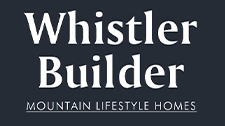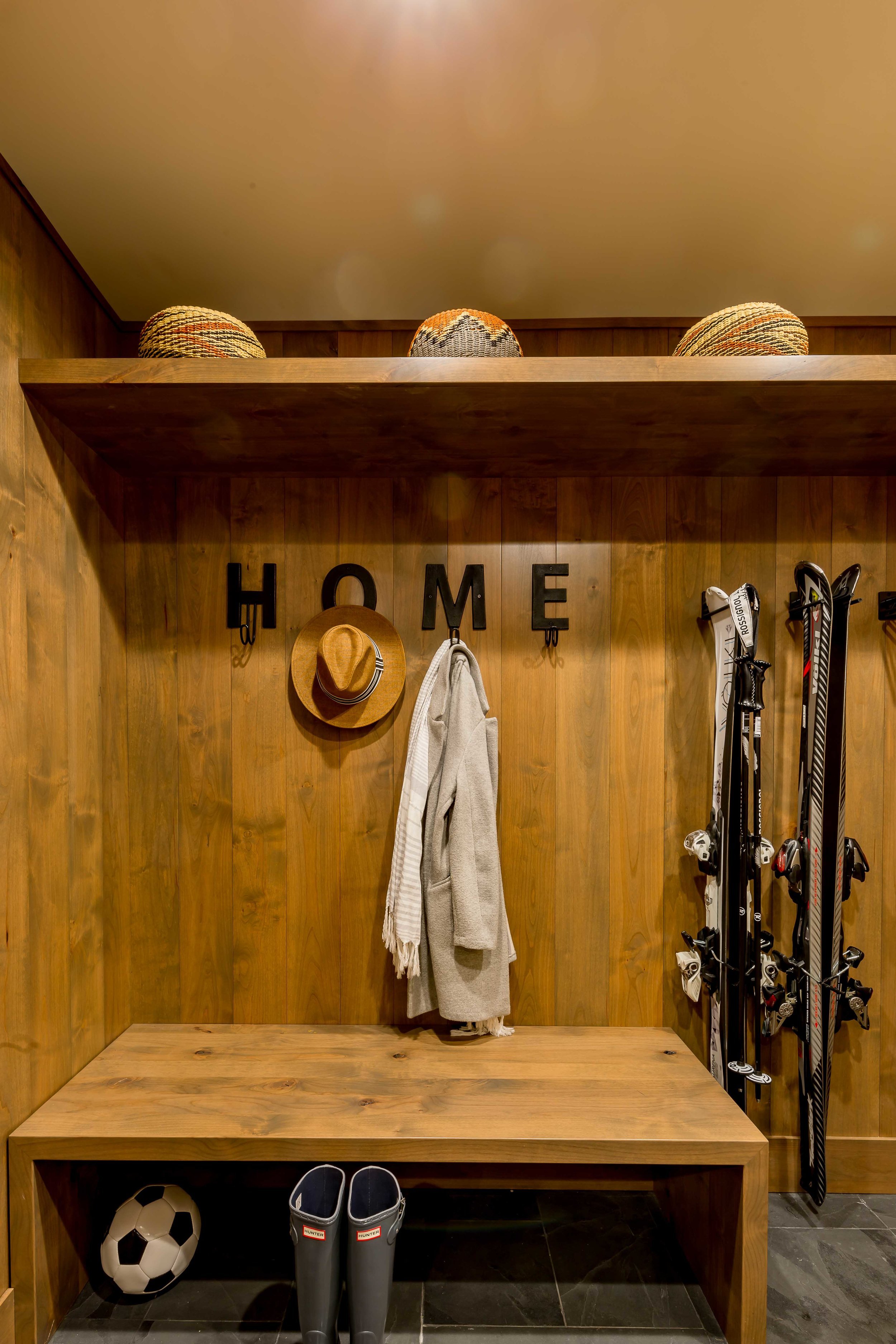Designing a Luxury West Coast Home in Whistler: Key Considerations for Modern Mountain Living
Nestled in the heart of British Columbia’s Coast Mountains, Whistler is an extraordinary location for crafting a custom home that blends luxury, style, and nature. With its breathtaking views, diverse outdoor activities, and distinct mountain climate, Whistler provides the perfect canvas for designing a west coast modern home that complements its surroundings.
West coast home design is characterized by its harmony with nature, clean lines, and thoughtful use of natural materials. Whether it’s through expansive windows that frame majestic alpine vistas or open-concept interiors that invite the outdoors in, a well-designed home can elevate the experience of mountain living.
Designing a home in Whistler requires careful consideration of the area’s unique environment. From planning for heavy snowfall to selecting sustainable materials that reflect the natural beauty of the region, every detail plays a role in creating a space that’s as functional as it is visually stunning.
This guide will explore key design elements—such as maximizing natural light, adapting to Whistler’s climate, and incorporating sustainable practices—that can help you create a west coast contemporary home tailored to the mountain lifestyle.
Capturing West Coast Views and Natural Light
One of the defining features of west coast home design is the seamless integration of the home with its natural surroundings. In Whistler, this means celebrating the breathtaking mountain views and lush forested landscapes while maximizing natural light throughout your home.
Expansive Windows and Skylights
Whistler Lifestyle Homes are known for their use of large, strategically placed windows and skylights. Floor-to-ceiling windows or glass walls not only frame Whistler’s iconic mountain vistas but also flood the interior with natural light, creating bright and inviting living spaces. Skylights are another essential element, allowing sunlight to filter into every corner of the home, even during the shorter winter days.
Our recently completed Mountain Retreat project is a great example of introducing more opportunities for natural light, which can significantly open up and transform a space.
Open-Concept Layouts
Open-concept spaces are a hallmark of west coast style homes, designed to foster a sense of connection between rooms and with the outdoors. By eliminating unnecessary walls and incorporating sliding glass doors that lead to outdoor patios or decks, you can create a flow that feels both luxurious and relaxed. This approach aligns perfectly with Whistler’s mountain lifestyle, where outdoor recreation and scenic beauty are central to daily living.
Blurring Indoor-Outdoor Boundaries
West coast modern homes often feature design elements that blur the lines between inside and out. Covered outdoor spaces, frameless glass railings, and natural materials like wood and stone used both indoors and out create harmony between your home and its environment. These features are not only visually stunning but also practical for Whistler’s climate, providing year-round access to the fresh mountain air.
By incorporating these elements into your custom home, you’ll create a sanctuary that captures the essence of west coast living—one where natural light and stunning views take center stage in your everyday life.
Here is an example of how an expanse of glazing was integrated to merge the surrounding environment with a comfortable living space.
Adapting to Whistler’s Mountain Climate
Designing a home in Whistler requires careful planning to ensure it thrives in the area’s distinct mountain climate. Heavy snowfall, cold winters, and high moisture levels demand both structural and aesthetic solutions that combine durability with the elegance of west coast architecture.
Durable Materials for Mountain Living
This Mountain Hideaway project in Squamish utilized multiple durable stone materials to create a seamless blend with the outdoors.
West coast modern homes often incorporate natural materials like cedar, stone, and metal, which are not only visually striking but also capable of withstanding harsh weather conditions. Cedar siding, for example, offers excellent resistance to moisture, while stone accents and metal roofing provide durability and a timeless aesthetic. By choosing materials that harmonize with the natural surroundings, your home will not only endure the elements but also blend seamlessly with Whistler’s landscape.
Roof Design for Snow Management
Snow is a defining feature of Whistler winters, and your roof design needs to accommodate it. Steeply pitched roofs are a signature element of mountain homes, allowing snow to shed easily and preventing excessive weight buildup. Adding robust gutter systems and snow guards ensures effective drainage while protecting walkways and outdoor spaces below. These functional features can be seamlessly integrated into a west coast modern aesthetic.
Effective snow management, like this roof and guttering design on our recent Fitzsimmons project is essential for the Whistler area.
Energy Efficiency for Year-Round Comfort
A well designed “home as a system” is essential for staying cozy in Whistler’s chilly winters and cool in its mild summers. High-performance windows, energy-efficient heating systems, advanced insulation materials and effective air barriers are staples of west coast contemporary homes, which prioritize sustainability and comfort. “Net Zero” is an energy rating designation which identifies a home’s ability to produce as much energy as it consumes over the course of a year. This level of self-sufficiency is often achieved by utilizing photo-voltaic solar panels to generate the electricity that offsets the energy required to meet the home’s energy demands.
Radiant floor heating is a popular choice, offering comfy efficient warmth that aligns with the clean, minimalist interiors of west coast design. Along with high performing energy efficient homes, introducing fresh indoor air becomes a standard requirement in conjunction with the increase in air tightness of the home. Utilizing Heat Recovery Ventilators ensures a healthy fresh air environment while maintaining energy efficiency.
By thoughtfully adapting your custom home to Whistler’s mountain climate, you’ll create a space that is not only resilient and energy-efficient but also a stunning example of west coast modern architecture tailored to the unique demands of mountain living. High Performance energy efficient homes are not only a requirement to meet the today’s building codes but also provide a healthier and more comfortable living space.
Sustainable Design for West Coast Contemporary Living
Sustainability is at the heart of west coast contemporary design, where homes are not only beautiful but also environmentally responsible. In Whistler, with its pristine natural surroundings, incorporating eco-friendly features into your custom home design is not just a trend, it’s a necessity. Sustainable design practices reduce environmental impact while enhancing the comfort and efficiency of your home as occupants of high-performance homes enjoy the comfort of consistent room temperatures and more enjoyable, quieter indoor environment with less noise pollution from outdoor sources.
Eco-Friendly Building Materials
West coast homes are known for using locally sourced and sustainable materials that minimize environmental footprints while maintaining a connection to the surrounding landscape. Reclaimed wood, for example, offers a rustic charm while reducing the need for new timber. Similarly, recycled steel, and natural stone, are excellent choices that align with west coast style homes’ commitment to sustainability. These materials not only withstand Whistler’s climate but also provide a rich, textured aesthetic that complements the natural beauty of the region.
Renewable Energy and Efficient Systems
Energy efficiency is a key element of west coast modern architecture, with a focus on reducing energy consumption while maximizing performance. Solar panels are a popular feature for west coast contemporary homes, harnessing the abundant natural energy available in Whistler’s sunny days. Geothermal heating systems, which use the earth’s natural temperature to regulate indoor climate, are another sustainable solution to gain traction in the region. Incorporating high-performance windows and doors ensures that your home retains heat during the winter and stays cool in the summer, minimizing energy costs. And while Whistler does see it's share of cloudy/snowy days, solar panels are a viable option as the energy harnessed during the warm/sunny months is adequate to achieve the Net Zero designation with a well designed energy efficient home.
Solar panels were used to provide the required renewable energy to achieve a “Net Zero” energy efficiency rating on this Whistler Lifestyle Home.
Landscaping for sustainability
A sustainable west coast home extends beyond the structure itself. Thoughtfully designed landscapes that use native, drought-resistant plants help conserve water while creating a harmonious environment. Native plant species, such as wildflowers, shrubs, and grasses, thrive in Whistler’s climate and require minimal maintenance. Rainwater harvesting systems can also be integrated into landscape design, allowing you to use collected rainwater for irrigation or other non-potable needs.
By choosing eco-conscious design elements, your luxury west coast home can reduce its environmental impact while maintaining the timeless beauty and functionality that define the west coast modern style. Sustainable living is an integral part of the mountain lifestyle and ensures that your home not only reflects the natural surroundings but also contributes to their preservation.
Crafting Multi-Functional Luxury Spaces
West coast contemporary homes are known for their versatility and thoughtful design that maximizes both function and style. In a Whistler home, where the lifestyle is centered around outdoor recreation, relaxation, and entertaining, creating spaces that serve multiple purposes is essential. By incorporating flexible layouts and clever storage solutions, you can ensure your home is adaptable to a variety of needs, from accommodating guests to providing dedicated space for work and play.
Flexible Interior Layouts
West coast style houses often prioritize open floor plans that allow spaces to evolve according to the homeowner’s needs. Guest rooms that double as home offices or recreational spaces are a perfect example of how a multifunctional room can be both luxurious and practical. Custom-built furniture, such as fold-down desks or murphy beds, adds flexibility without sacrificing aesthetics. Whether you're hosting friends for a weekend ski trip or working remotely during the off-season, your home will effortlessly accommodate it all.
Storage for Mountain Gear
Living in Whistler means embracing an active, outdoor lifestyle—and that means ample storage for ski gear, mountain bikes, hiking equipment, and other outdoor essentials. West coast modern interior design makes use of built-in storage solutions, such as custom cabinetry, hidden storage compartments, and dedicated gear rooms. Ski racks, drying rooms, and spacious mudrooms ensure that your home remains organized and clutter-free, while maintaining the sophisticated, minimalist design of the space.
Outdoor Living Spaces
A hallmark of west coast style homes is the integration of outdoor living spaces that extend the home’s functionality. In Whistler, where the natural beauty of the mountains and forests is a key part of daily life, outdoor areas like heated patios, fire pits, and covered decks are essential. These spaces can be used year-round, whether you're relaxing in front of the fire after a day on the slopes or entertaining guests in the summer months. With carefully chosen materials like stone, wood, and glass, these outdoor areas complement the home’s interior while maintaining a connection to the natural surroundings.
By embracing the idea of multifunctional spaces, your west coast home can support a variety of activities and experiences, all while remaining stylish, comfortable, and perfectly suited to the mountain lifestyle. The flexibility of these spaces ensures that your luxury home adapts to your needs, whether you’re entertaining, working, or enjoying the outdoors.












